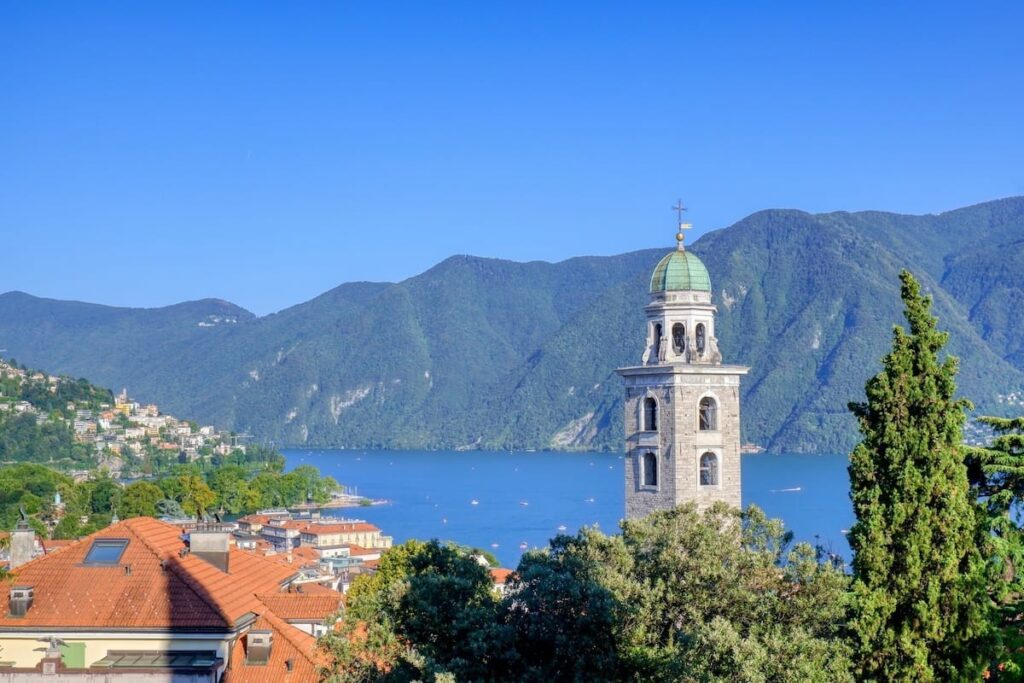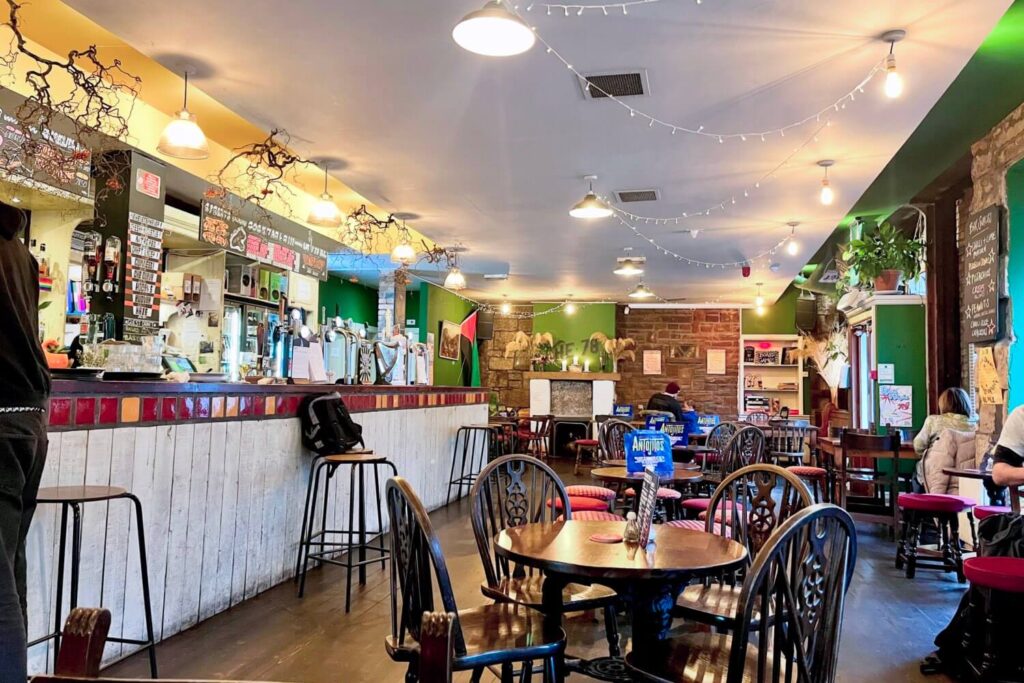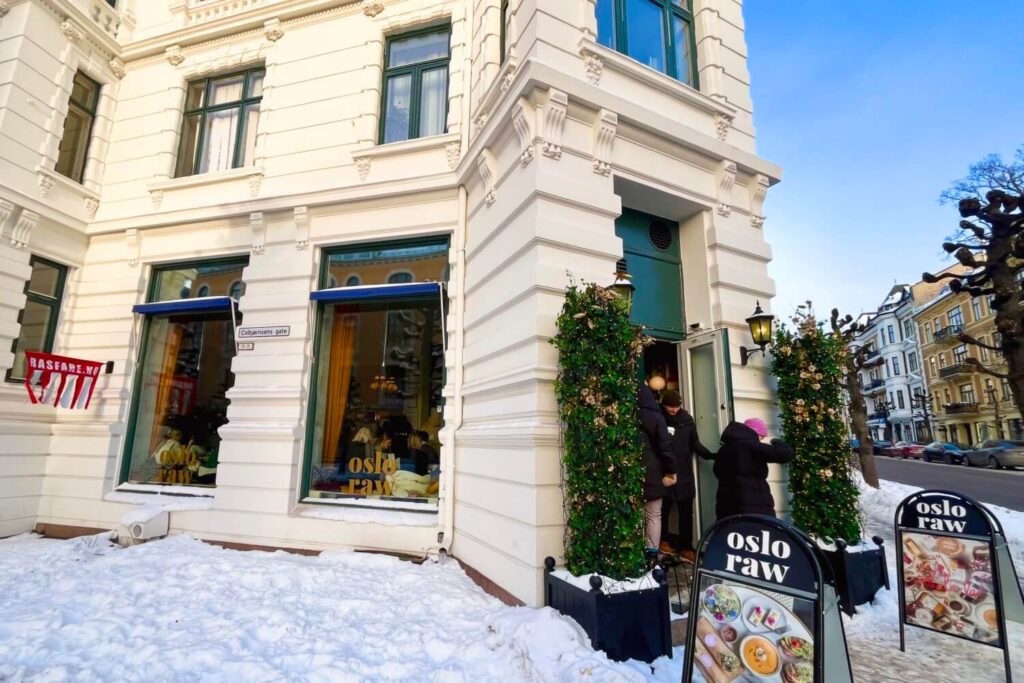There’s something really exciting about crossing an international border. That moment when you pass from one territory to another, where things are done a little bit differently to how you’re used to them being done and where everything is suddenly in a different language. Crossing any boundary promises the possibility of new adventures and interesting discoveries.
In Europe, we’re used to crossing borders. Thanks to the Schengen Agreement, we can cross them unchallenged and unannounced. For many who live near a border, it’s an everyday occurrence with many living in one country and working in another.
For Jade and I who live on the increasingly isolated island of Great Britain, it’s still a novelty. So, on a recent trip to Lake Como in Italy, the prospect of crossing into nearby Switzerland was far too tempting to resist. For Jade, it would be another country crossed off of her list whilst for me, it would be a wonderful opportunity to return to a country I love greatly and to visit the Italian-speaking region of the tiny landlocked nation for the first time.
Crossing Into Switzerland
Crossing the border was easy! A short bus ride connected us from our Airbnb in the village of Argegno to the Como San Giovanni station on the outskirts of Como. From there, the Swiss town of Lugano was a mere 40 minutes away on a smart Eurocity train that was jointly operated by the Swiss SBB and Trenitalia.
A stretch of tunnel marked the border between the two nations. The train crawled through it, as if purposefully building the excitement for what was waiting at the other end. Upon emerging from the darkness, we were in Switzerland and the town of Chiasso, which was the first stop on our short journey. The train waited at the station for around 5-10 minutes whilst Swiss border guards walked through the train, a largely symbolic exercise. Clearly short on time, they practically ran down the train’s corridor, glancing at people as if they were looking for a specific person. One guard opened the door to the toilet and briefly peered in.
Rudimentary checks complete, the train set off again. An announcement in multiple languages welcomed us on-board on behalf of the Swiss crew who had taken over from the Italian crew.

When in Switzerland, eat pretzels; and, our first view of the city centre of Lugano, Switzerland
We arrived in Lugano on time, as one with knowledge of how Swiss trains normally operate might expect. We decided to mark our arrival in a fashion befitting our new surroundings, by buying a pretzel from Brezelkönig. Sure, we were in the Italian-speaking region of Switzerland and therefore a pretzel wasn’t completely in line with the region’s cuisine, but it felt better buying one here than it would have done in Italy. Besides, if you try to buy a pretzel anywhere in Italy you’ll appreciate how difficult is.
Lugano’s railway station sits atop a small hill and is connected to the town centre by funicular. Tempting as it was, we declined the ride down and opted to walk down the hill in order to enjoy the views over Lake Lugano and to take in the outskirts of the city centre.
It was an exceedingly hot and sunny day. The bright sunshine made the lake glisten and sparkle and made the colour of the buildings seem more vivid. We were glad to head for the relative shade of the shopping streets in search of somewhere to eat.
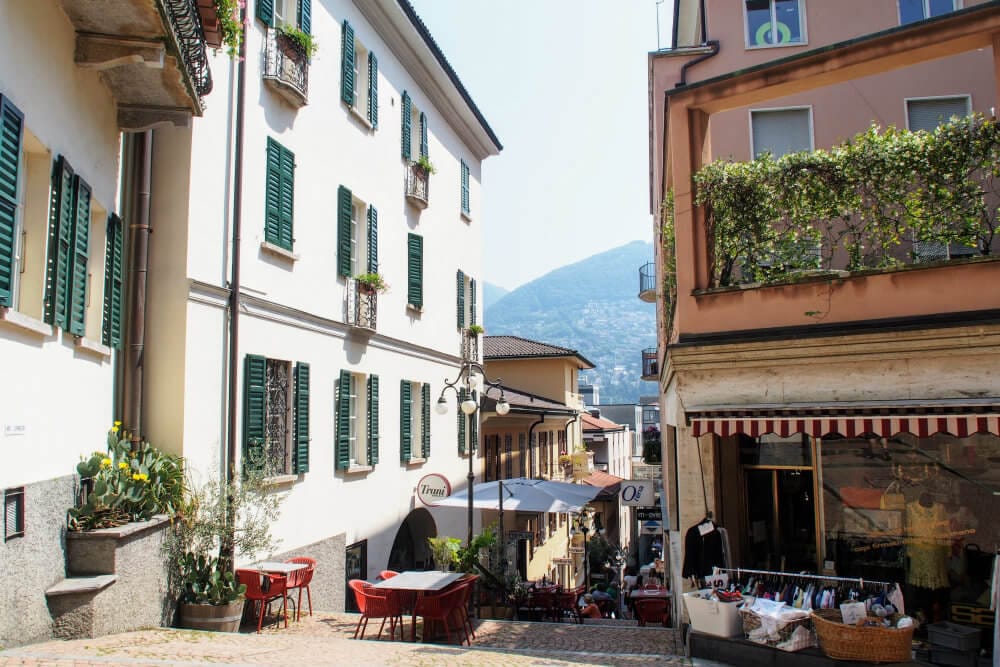
Planning Our Day in Lugano
We had anticipated that we might notice a difference in prices from those in Italy, but were still staggered but how expensive everything was. We ended up paying a small fortune for a couple of beers and toasted piadinas at Caffè Caruso on Piazza Reforma (tasty food, but service was poor and they don’t accept card payments). Whilst savouring each bite, we decided to plan the day ahead.
We thought that we’d spend an hour or so wandering around the city centre, and then head out to the summit of one of the two mountains that flank Lugano. Both were reasonably easy to get to and wouldn’t require too much effort.
We had every intention to fulfill these plans, but after crossing a pretty square and feeling like our brains we being boiled in their own juices by the early afternoon sunshine, we quickly reviewed them.
It didn’t take us long to surmise that it was too hot to do anything. We could barely function. Time for plan B.
Back in Italy, we’d already planned for the possibility that we wouldn’t have the energy to sightsee. With this in mind, we’d packed our swim wear in case we ended up at Lido di Lugano, the city’s lakeside swimming complex. Sure enough, that’s exactly where we decided to head to.
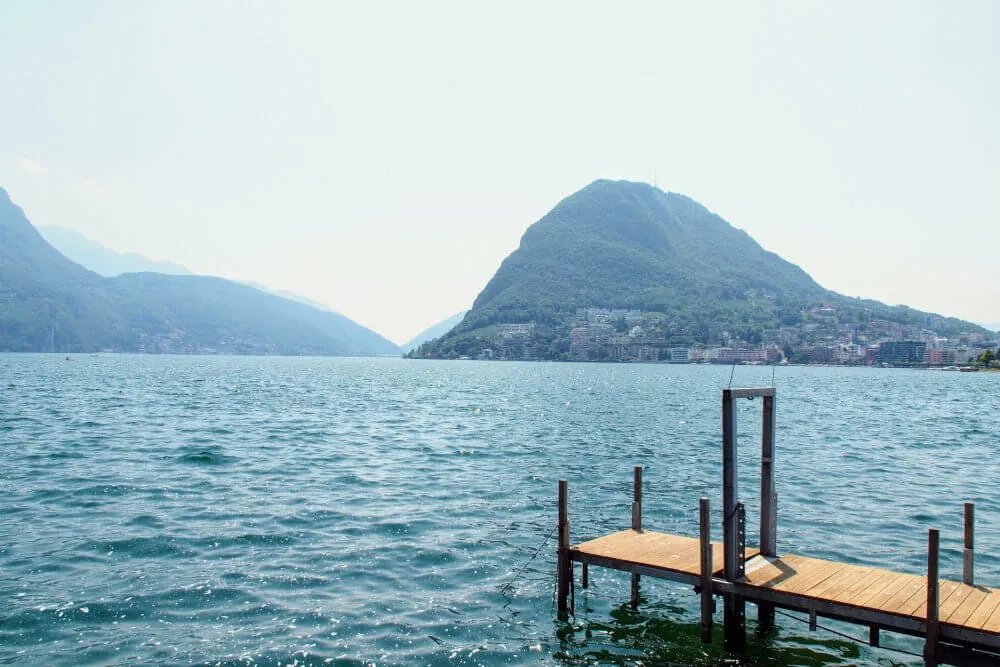
Scenes of Lugano, Switzerland
Finding Lido di Lugano
To get to the Lido, we had to pass through Parco Ciani, a beautifully-tended and well-used green space right next to the city centre and lining the north bank of the lake. In amongst the neatly trimmed lawns, flower beds and foliage, visitors can find a church, Natural History Museum, library and Villa Ciani, a pristine peach-coloured 1930’s house. The villa is commonly used in publicity photos for Lugano Tourism and these days is used as an exhibition space.
Shortly after arriving at the Lido,we realised that we had made a fabulous decision. The Lido was incredible! As well as an Olympic-sized pool and diving boards, there were lawns for sunbathing, an outdoor bar and best of all, a beach on Lake Lugano itself.
Thankfully, it being a weekday, the Lido wasn’t too busy. Sunbathers and swimmers alike had plenty of room to relax and swim in the warm water. We headed straight for the beach so that we could take a refreshing dip in the lake.
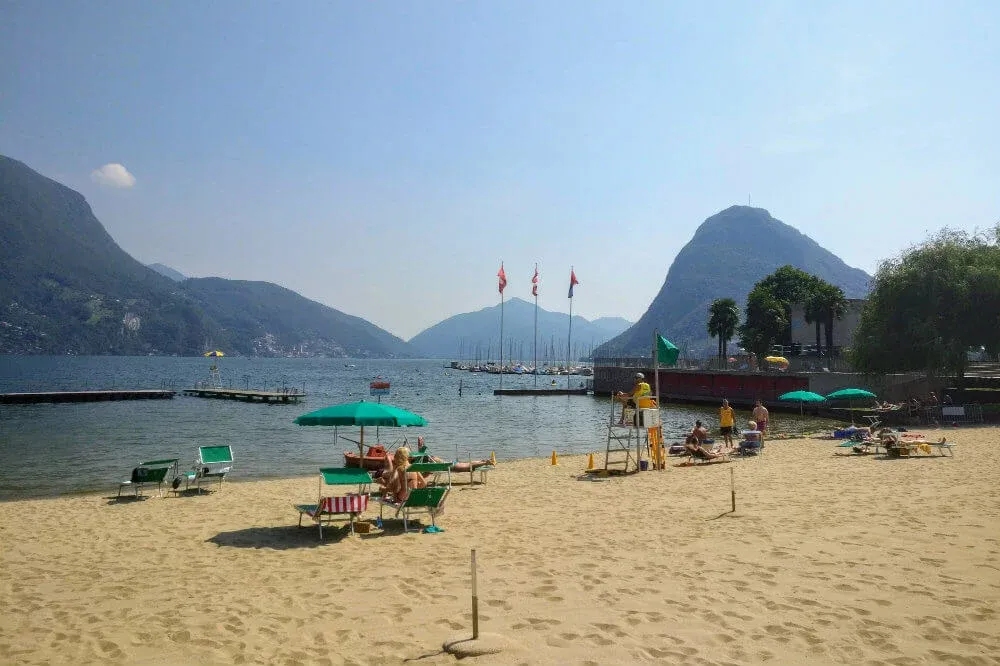
The beach at Lido di Lugano, looking south across Lake Lugano and the main swimming pool
Swimming in Lake Lugano
Undeterred by a thick layer of algae at the water’s edge, we waded in, submerged ourselves and found instant relief from the heat of the sun. For a while we calmly kept ourselves afloat, slowly spinning around in order to take in our surroundings. To the north, the beach where we had left our towels. A friendly bartender was mixing up another fresh batch of Aperol Spritz to a handful of reclining patrons. To the east, a funicular crept up the steep, green slopes of the 925m high Monte Brè, a mountain whose peak dominates the city’s skyline. To the south, teenagers leapt excitedly into the lake from a pontoon. The silhouette of another nearby mountain, Monte San Salvatore (912m), sparkled and shimmered in the hazy sunshine. It was bliss!
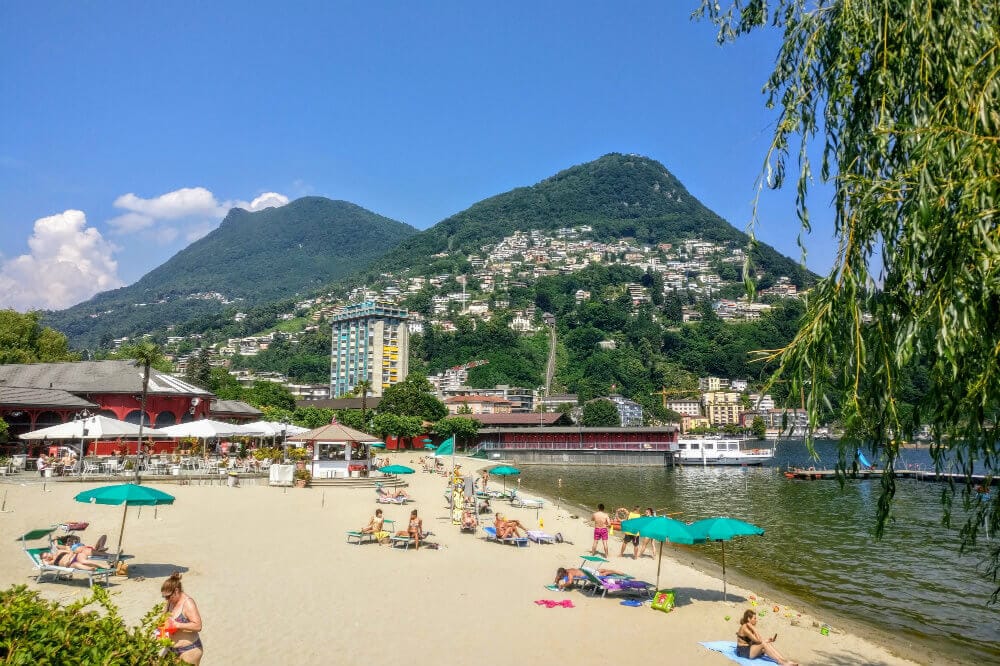
Having relaxed almost to the point of inducing a coma, we headed for the bar to quench our thirst. When Jade and I travel, it’s rare for us to take it easy for very long. We’re normally too keen to see everything and too bored to stay put. However, on this glorious afternoon in Lugano, weary from days of prior sightseeing and drained of energy by the sun, we gave in to tranquility at the most relaxing and most stunning of municipal pools.
Before leaving, we took a dip in a shallow pool that was alongside the diving boards. Teenagers were jumping from the high platform and we were keen to watch. Each teenager took it in turns to do as impressive a dive as they could muster. Most ended up plummeting uncomfortably, some flapping their arms in a panicked attempt to slow themselves down. The show was paused briefly whilst one teen was consoled having smacked into the water face first with a loud slap. An audible groan rang out amongst the viewing crowd.
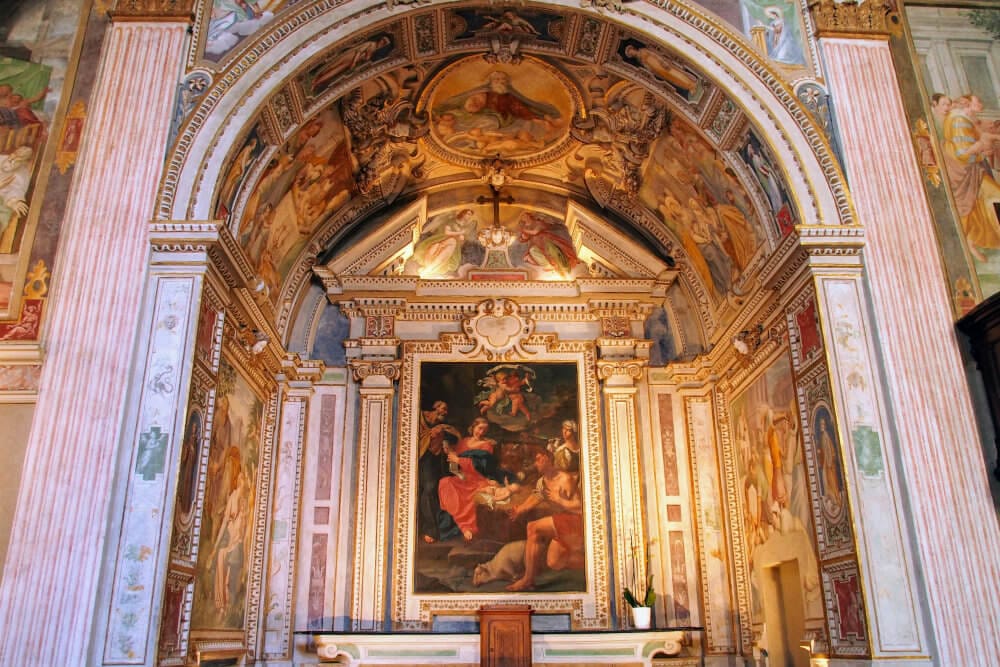
17th century frescoes adorn the ceiling of Chiesa di San Rocco
Time to Return to Italy
Evening approached and it was time to head back to the railway station and back across the border to Italy. Lugano’s town centre was now cooler and quieter. As we strolled through the pristine squares, we took some photos and called into Chiesa di San Rocco, a church whose construction was started in 1528. Inside, the ceiling was covered with immaculate 17th century frescoes. It was stunning!
Rather than tackle the hill upon which the railway station sat, we made use of the funicular. Not only did this help us save some energy, but it also allowed us time before our train departed to buy some Swiss chocolate. Our remaining few Swiss Francs were spent on a fridge magnet to add to our ever growing collection and a bottle of Rivella, a Swiss fizzy drink made from milk whey whose taste splits opinion.
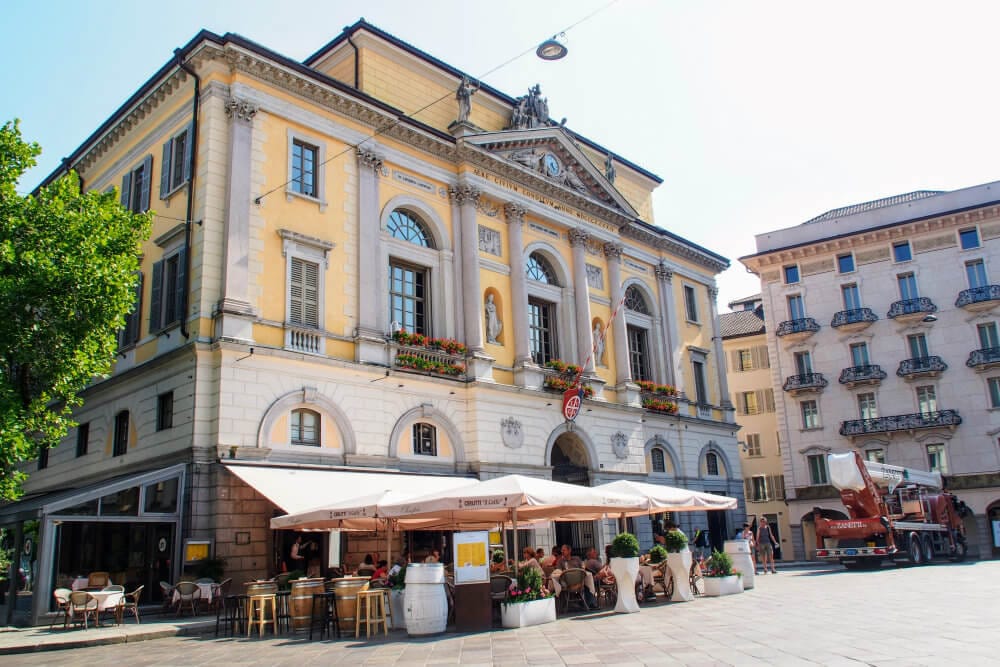
Summing Up Our Day in Lugano
It hadn’t been the day we expected to have, but we left with a fondness for Lugano. It felt like a city comfortable with itself. It was a city that was smart and well looked after and that offered its residents a good quality of life. Despite the city centre being fairly busy with traffic and people, at no point did it feel busy. Instead, the city felt like it was on a siesta. Lulled by the sun, people strolled slowly through parks, sat underneath trees, dangled their feet into the lake and sipped cool drinks underneath parasols on pristine squares.
We learnt something on our day in Lugano. Sometimes, the most memorable adventures are those impromptu days where you do next to nothing. In our case, we crossed an international border to go for a swim. A ridiculous proposition on paper, but a day we’ll treasure for a long time.
Plan & Book Your Day Trip From Como to Lugano
Travelling from Como to Lugano is very easy and doesn’t take very long at all.
By Train
For our day trip from Como, Italy to Lugano, Switzerland, we took the train from Como San Giovanni station to Lugano station. We bought tickets from vending machines (multiple language options) at each station just before the train departed. Our 2nd class tickets cost €20 per person one way. Journey time was around 38 minutes, though this can vary depending on border formalities.
We travelled on a surprisingly smart and modern EuroCity train that was jointly operated by Switzerland’s SBB and Italy’s Trenitalia. We recommend travelling on a EuroCity (EC) or InterCity (IC) service as opposed to a Regional service (R, IR or Re) as EC and IC services are much faster.
Some services on this route terminate in a handful of Swiss cities while others pass through Switzerland and onwards to other European cities. Check the departure boards and/or ask station staff if you’re unsure which train you should catch for Lugano.
If you wish to book your train tickets in advance, you can using Trainline.
By Coach
Flixbus runs a service from Como to Lugano with a journey time of around 45 minutes and prices at around €5-6 each way.
You can pre-book your bus tickets online via Trainline.
By Car
If you have a car, the route is almost identical and takes the same length of time, but the formalities involved with driving on Swiss roads makes it a less favourable option than the train.
